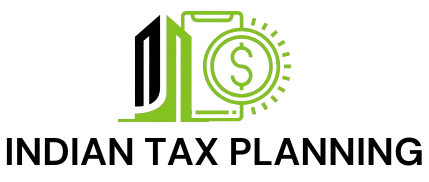When it comes to managing personal finances, understanding income tax is crucial. For the Financial Year 2024-25 (Assessment Year 2025-26), the Indian government has continued with its dual tax regime structure, giving taxpayers the option to choose between the old tax regime and the new tax regime. Let’s break down the income tax slabs for this year and help you decide which regime might be better for you.
Dual Tax Regime: Old vs New
Since FY 2020-21, taxpayers have had two options:
- Old Tax Regime: Higher tax rates but more deductions and exemptions (such as 80C, 80D, HRA, LTA, home loan interest).
- New Tax Regime: Lower tax rates but very limited deductions and exemptions.
From FY 2024-25 onwards, the New Tax Regime has been made the default regime, though individuals can still opt for the old regime if they prefer.
New Tax Regime Slabs for FY 2024-25
Here are the income tax rates under the new regime:
| Annual Income | Tax Rate |
|---|---|
| Up to ₹3 lakh | Nil |
| ₹3 lakh – ₹6 lakh | 5% |
| ₹6 lakh – ₹9 lakh | 10% |
| ₹9 lakh – ₹12 lakh | 15% |
| ₹12 lakh – ₹15 lakh | 20% |
| Above ₹15 lakh | 30% |
Key highlights of the New Tax Regime:
- Section 87A rebate: If your taxable income is up to ₹7 lakh, you do not have to pay any tax after rebate.
- Standard Deduction: A deduction of ₹50,000 is available even under the new regime (earlier, it was available only under the old regime).
- Lower tax rates compared to the old regime.
- Most exemptions and deductions (like 80C, 80D, HRA, etc.) are not available.
Old Tax Regime Slabs for FY 2024-25
If you choose to stick with the old regime, here’s how your income will be taxed:
| Annual Income | Tax Rate |
|---|---|
| Up to ₹2.5 lakh | Nil |
| ₹2.5 lakh – ₹5 lakh | 5% |
| ₹5 lakh – ₹10 lakh | 20% |
| Above ₹10 lakh | 30% |
Key features of the Old Tax Regime:
- Section 87A rebate: If your taxable income is up to ₹5 lakh, you get a full rebate and pay no tax.
- Deductions and Exemptions:
- Section 80C (up to ₹1.5 lakh for investments in PPF, ELSS, life insurance premiums, etc.)
- Section 80D (medical insurance premiums)
- House Rent Allowance (HRA)
- Leave Travel Allowance (LTA)
- Home loan interest (Section 24) and many others.
- Ideal for taxpayers who have significant deductions to claim.
Additional Points to Note
- Surcharge:
- 10% surcharge on income exceeding ₹50 lakh
- 15% on income exceeding ₹1 crore
- 25% on income exceeding ₹2 crore
- 37% on income exceeding ₹5 crore
(In the new regime, the highest surcharge is capped at 25%)
- Health and Education Cess:
A 4% cess is applicable on the total income tax and surcharge amount, under both regimes.
Which Regime Should You Choose?
Choosing the right tax regime depends on your personal financial situation:
- If you have major investments, home loan, insurance premiums, and can claim significant deductions, the old tax regime might offer more savings.
- If you prefer a simpler structure without tracking exemptions and deductions, and have fewer claims, the new tax regime could be better.
It’s recommended to calculate your tax liability under both regimes before deciding.
Example for Better Understanding
Suppose your annual income is ₹10 lakh:
- Under the New Regime, after a ₹50,000 standard deduction, your taxable income will be ₹9.5 lakh.
- Under the Old Regime, if you claim deductions under 80C, 80D, and others amounting to ₹2 lakh, your taxable income may come down to ₹8 lakh, leading to lower tax under the old regime.
Hence, a detailed calculation is crucial!
Final Thoughts
Understanding the income tax slabs and the differences between the two regimes can help you plan better and maximize your savings. With the new regime being the default from FY 2024-25, it’s even more important to make an informed choice.
Make sure to evaluate your deductions, exemptions, and financial goals before filing your returns!
For expert assistance in tax planning and compliance, reach out to Indian Tax Planning today!

